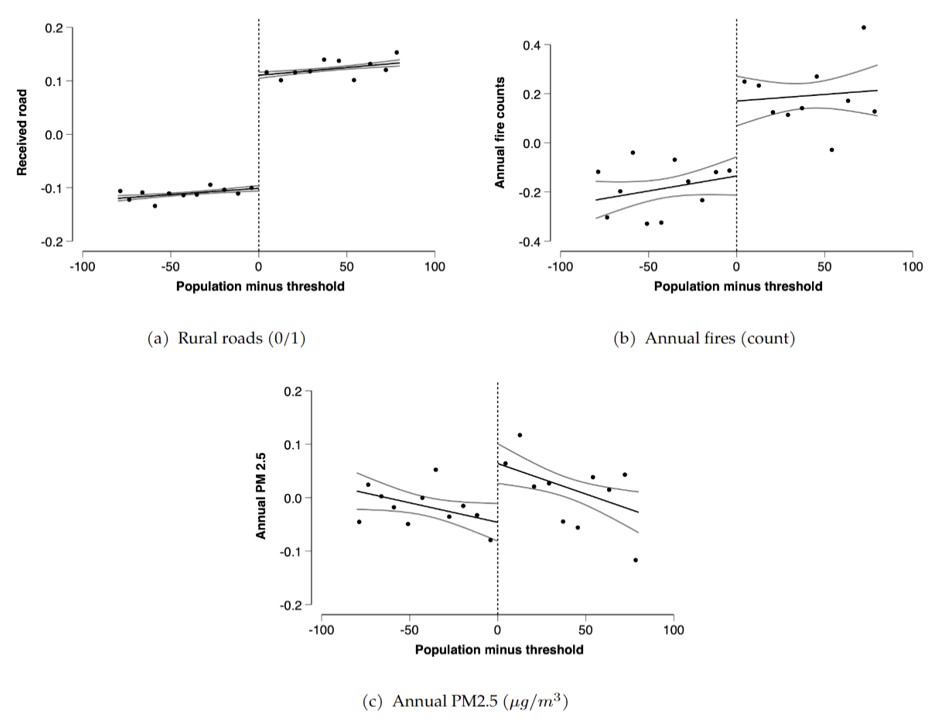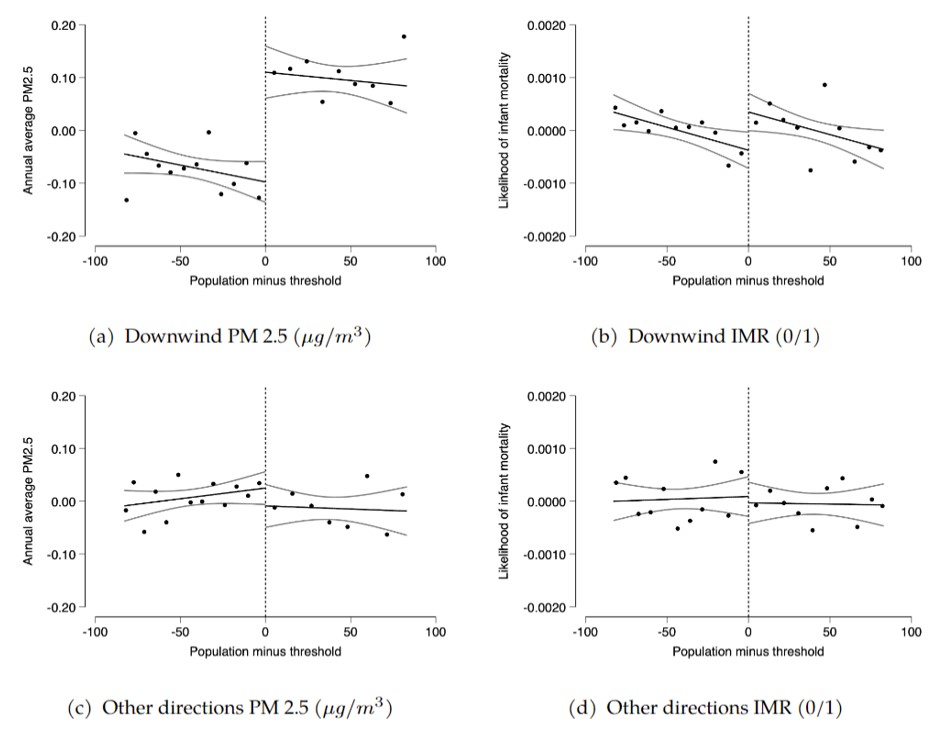
Constructing rural roads in India caused farm labour exits, which increased the use of crop fires that hurt downwind communities
The persistence of the labour productivity gap between farm and non-farm sectors in lower-income countries suggests that labour is greatly misallocated across sectors (Gollin et al. 2014, Kuznet 1955, Lewis 1954). The field of development economics has long concentrated on both understanding the roots of labour (mis)allocation in agriculture, and identifying policies for structural transformation away from low-yield agriculture (Banerjee and Newman 1998, Bryan et al. 2014, Restuccia and Rogerson 2017). However, existing research overlooks production externalities that arise from policies that encourage labour reallocation, such as road construction. In our recent research (Garg, Jagnani, and Pullabhotla 2023), we offer evidence that policies which target labour market frictions can produce unintended environmental consequences that have negative health effects.
Figure 1: Effects of rural roads on fires and PM2.5

Notes: Impact of rural roads on crop fires and PM2.5
Using a regression discontinuity design based on population thresholds for a national rural road programme in India, we find that new roads significantly increase agricultural fires and particulate emissions in rural areas. Specifically, a new road leads to a 60% increase in annual fires (1.6 additional fires per year) and a 1.1% rise in annual PM2.5 levels (0.5 μg/m³). The surge in particulate pollution is mainly due to emissions from biomass burning, concentrated during winter harvest and post-harvest months. This aligns with the conclusion that agricultural fires, rather than vehicular emissions or economic activity, primarily cause the elevated PM2.5 levels associated with new rural roads.
Do agricultural labour exits increase crop fires?
Using the same regression discontinuity design, Asher and Novosad (2020) show that these rural roads primarily drive labour exits from agriculture without affecting other economic outcomes like assets or income. There's no increase in farming equipment, crop diversification, or agricultural production. We confirm these results in our sample. In line with labour exits, we find that rural roads lead to higher agricultural wages in villages. Elevated wages can prompt farmers to replace labour by using fires for sugarcane harvesting or rice residue clearing. Our baseline data supports this, showing a strong positive correlation between farm wages and agricultural fires, as well as a strong negative correlation between the share of labour in farming and agricultural fires.
Sub-sample analyses reinforce that farm labour exits are likely the key driver behind increased agricultural fires. Specifically, rural roads boost agricultural fires and emissions more in districts with below-median relative agricultural wages at baseline. The effect is modest in districts with above-median relative agricultural wages. Also, the impact is concentrated in districts with above-median production of crops like rice and sugarcane, which benefit from fire use when farm labour exits. In such districts, fires are used either to quickly clear harvest residues before the next planting season (rice) or to simplify harvesting (sugarcane). Together, as expected, we observe increased fires and emissions mainly in districts with high rice or sugarcane production and low baseline relative agricultural wages, with negligible effects elsewhere. We find no support for alternative theories that link rural roads to agricultural fires, such as shifts in planting dates or the adoption of mechanised harvesting.
Figure 2: Did the increase in crop fires due to rural roads increase infant mortality?

Notes: Impact of rural roads on PM 2.5 and infant mortality rates (IMR) for downwind vs. other locations
Lastly, we examine the health impacts of rural roads, known to increase agricultural fires and air pollution. Using the same design, we find that villages downwind within 50 km from treated villages experience a 2.3% (1 μg/m³) annual rise in PM2.5 levels. No such increase is observed in non-downwind villages within the same distance. Likewise, infant mortality rate climbs by approximately 5.5% (0.3 percentage points) in downwind villages but remains statistically unchanged in non-downwind villages. Given that other socioeconomic effects of rural roads don't correlate with wind direction, the uptick in infant mortality in downwind areas is likely due solely to increased air pollution from agricultural fires.
Policy implications
The persistence of the agricultural productivity gap has generated considerable interest amongst governments and international agencies to devise policies that reduce frictions in labour reallocation across sectors. Our research does not imply such efforts are misguided or should be discouraged. Instead, our results underscore the need to complement these policies with strategies to mitigate their potential negative environmental externalities. In our context, future research could investigate the design and implementation of monetary and non-monetary incentives to alter farmers' decisions to engage in using fire in agriculture in the face of soaring labour costs (Jack et al. 2023), particularly in areas where our results show these externalities manifest (e.g. low relative farm wage areas with high production of rice or sugarcane).
References
Asher, S, and P Novosad (2020), “Rural Roads and Local Economic Development,” American Economic Review, 110(3): 797–823.
Banerjee, A, and A F Newman (1998), “Information, the Dual Economy, and Development,” Review of Economic Studies, 65(4): 631–53.
Bryan, G, S Chowdhury, and A M Mobarak (2014), “Underinvestment in a profitable technology: The case of seasonal migration in Bangladesh,” Econometrica, 82(5): 1671–1748.
Garg, T, M Jagnani, and H Pullabhotla (2023), “Rural Roads, Farm Labor Exits, and Crop Fires,” American Economic Journal: Economic Policy, Conditionally Accepted.
Gollin, D, D Lagakos, and M E Waugh (2014), “The agricultural productivity gap.” The Quarterly Journal of Economics, 129(2): 939–993.
Jack, B K, S Jayachandran, N Kala, and R Pande (2022), “Money (Not) to Burn: Payments for Ecosystem Services to Reduce Crop Residue Burning”, Working Paper.
Kuznets, S (1955), “Economic growth and income inequality.” American Economic Review, 45(1): 1–28.
Lewis, A W (1954), “Economic Development with Unlimited Supplies of Labour.” The Manchester School, 22(2): 139–91.
Restuccia, D, and R Rogerson (2017), “The causes and costs of misallocation,” Journal of Economic Perspectives, 31(3): 151–74.



